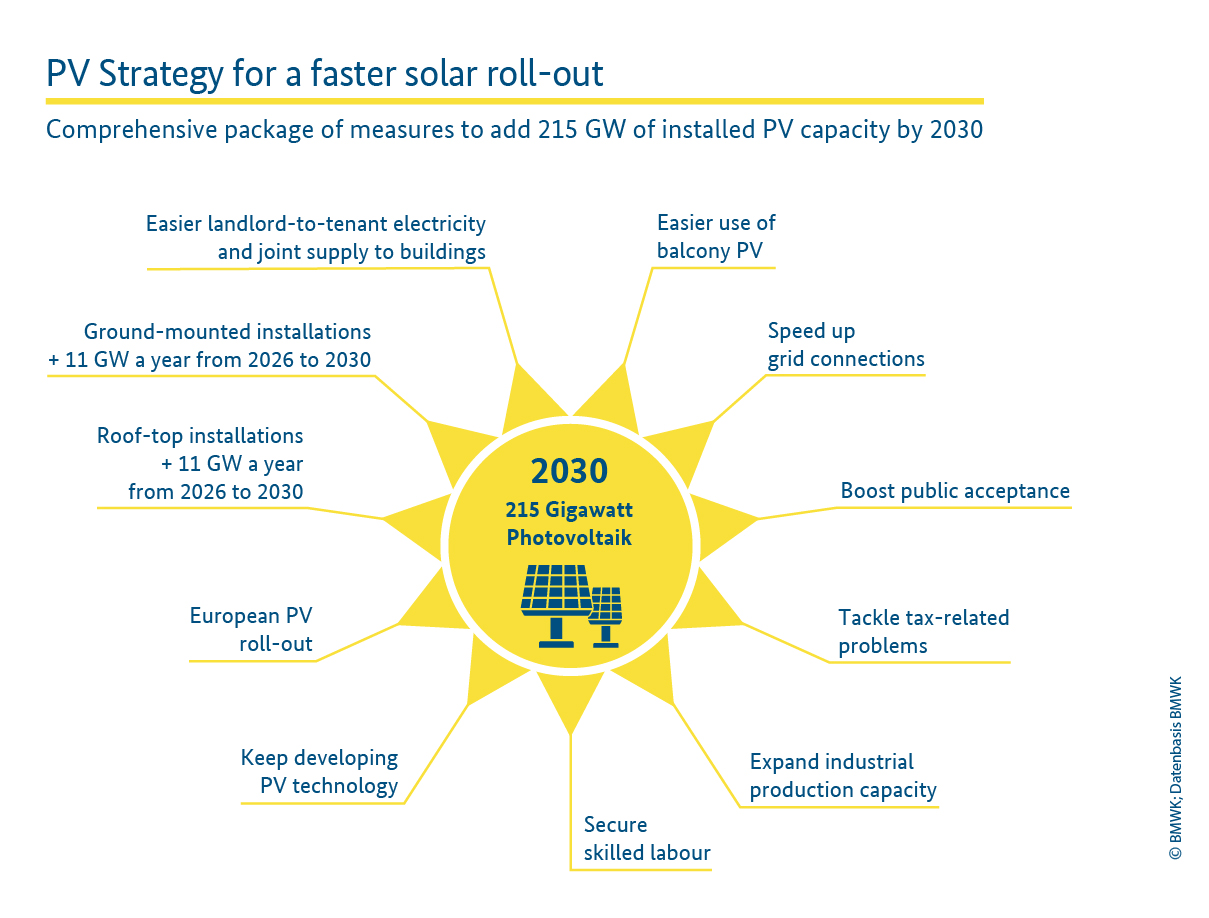Stepping up the PV roll-out
A comprehensive strategy aims to significantly boost the expansion of photovoltaics in Germany. The focus is on measures in eleven areas.
 © BMWK
© BMWK
More than 600 comments were sent in following the first PV Summit in March 2023 on the drafting of a PV Strategy (in German only), the finished version of which Federal Minister Robert Habeck presented at the second summit at the beginning of May. Work has now begun on implementing the strategy.
The background: by 2030, the share of gross electricity consumption covered by renewable energy in Germany is to reach 80%. Photovoltaic energy (PV) is considered one of the cheapest energy sources and is one of the most important future sources of electricity generation. By 2030, the Federal Government therefore aims to use the PV Strategy to boost the installed PV capacity to 215 gigawatts (GW). In 2022, the amount of newbuild stood at something over seven GW. The aim for 2023 is nine GW. Nearly 2.7 GW of new capacity was installed in the first quarter of 2023.
So the close to 50 page long PV Strategy needs to pave the way for quite a lot more. The measures cover 11 fields of action: ground-mounted PV installations are to expand by at least 11 GW a year from 2026. This will require the provision of enough land and speedier planning and approval procedures. Roof-top PV is also to be given a boost on commercial buildings.
It is to become easier to use landlord-to-tenant electricity and for people to supply buildings together. Here, a new model is to result in more PV installations on the roofs of multi-family houses, and is to facilitate the on-site use of solar power for all the people in the building. In order to encourage the use of balcony PV, red tape needs to be cut, so that the equipment can be connected more quickly.
A rapid PV roll-out also needs public acceptance and participation to be as high as possible. For example, the municipalities can become beneficiaries of revenues. An effective integration of energy and tax law is also on the agenda of the PV Strategy, as is the targeted expansion of domestic industrial manufacturing capacities. A faster roll-out will require more skilled workers to make, plan, install and maintain the PV equipment. New training courses are to help with this.
Also, the technological development is to receive a boost from the Federal Government’s forthcoming 8th Energy Research Programme. The EU Solar Energy Strategy and the Fit for 55 package could help to speed up the PV roll-out across Europe.

